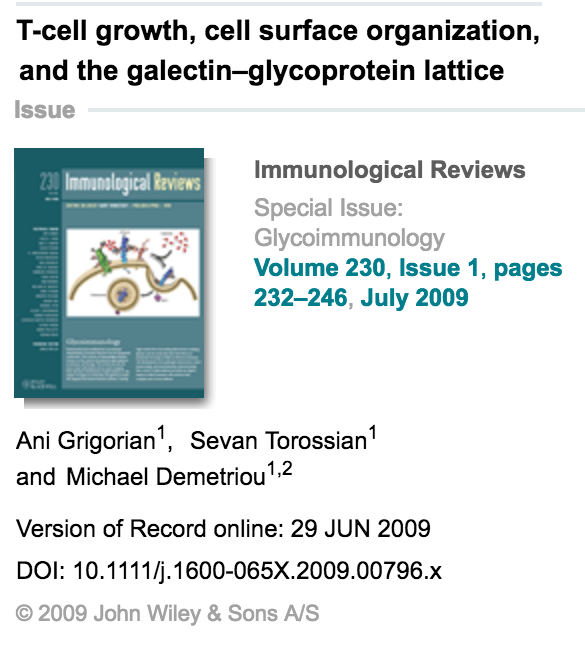Journal of Immunological Reviews – Cover Publication
Summary: Basal, activation, and arrest signaling in T cells determines survival, coordinates responses to pathogens, and, when dysregulated, leads to loss of self-tolerance and autoimmunity. At the T-cell surface, transmembrane glycoproteins interact with galectins via their N-glycans, forming a molecular lattice that regulates membrane localization, clustering, and endocytosis of surface receptors. Galectin–T-cell receptor (TCR) binding prevents ligand-independent TCR signaling via Lck by blocking spontaneous clustering and CD4-Lck recruitment to TCR, and in turn F-actin transfer of TCR/CD4-Lck complexes to membrane microdomains. Peptide–major histocompatibility complexes overcome galectin–TCR binding to promote TCR clustering and signaling by Lck at the immune synapse. Galectin also localizes the tyrosine phosphatase CD45 to microdomains and the immune synapse, suppressing basal and activation signaling by Lck. Following activation, membrane turnover increases and galectin binding to cytotoxic T-lymphocyte antigen-4 (CTLA-4) enhances surface expression by inhibiting endocytosis, thereby promoting growth arrest. Galectins bind surface glycoproteins in proportion to the branching and number of N-glycans per protein, the latter an encoded feature of protein sequence. N-glycan branching is conditional to the activity of Golgi N-acetylglucosaminyl transferases I, II, IV and V (Mgat1, 2, 4, and 5) and metabolic supply of their donor substrate UDP-GlcNAc. Genetic and metabolic control of N-glycan branching co-regulate homeostatic set-points for basal, activation, and arrest signaling in T cells and, when disturbed, result in T-cell hyperactivity and autoimmunity.
Link To Immunological Reviews Cover






